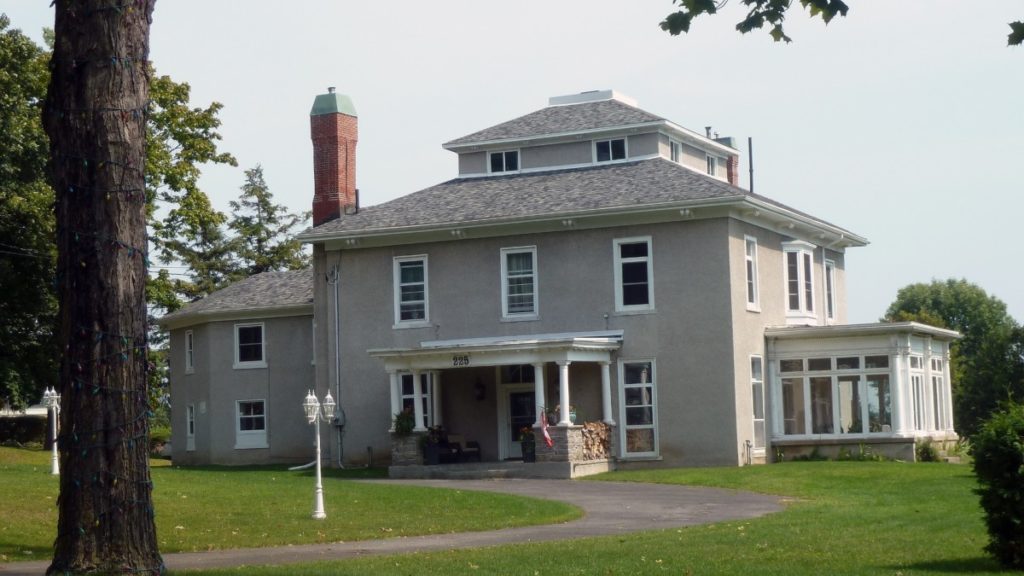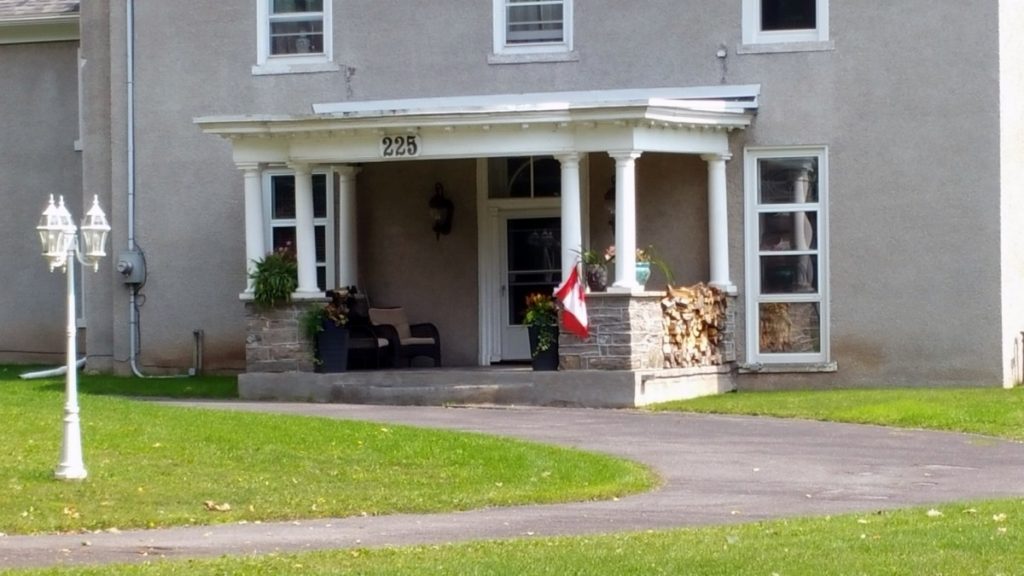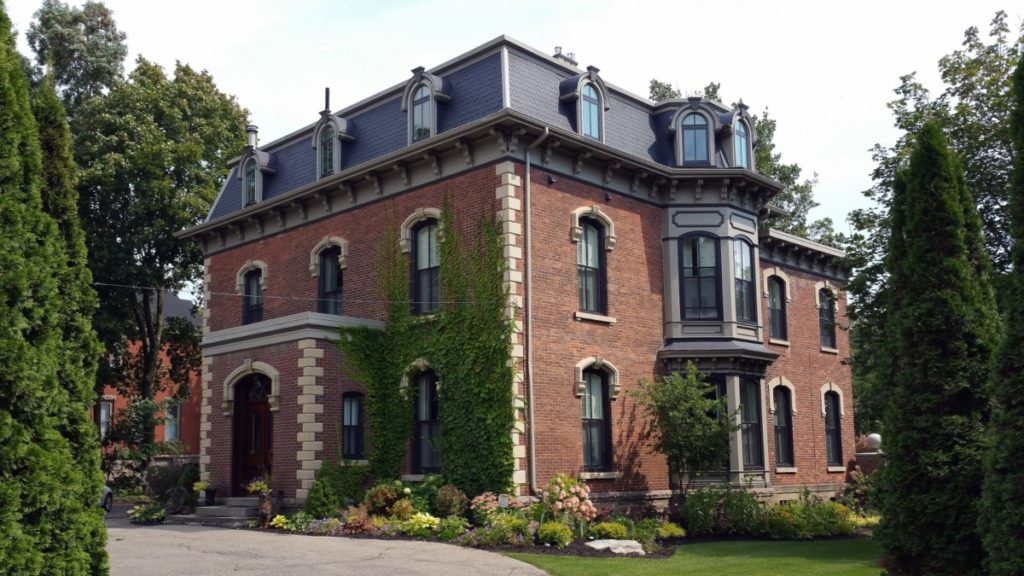
The most magnificient house is yet to be featured (and that will come in an upcoming blog post) but I think this is the grandest area of Brockville. An absolutely stunning grouping of homes. I hope you’re enjoying reading about Brockville as much as I enjoyed discovering it.
155 King Street East Bartholomew and Ruth Ann Carley House – c. 1830
Today we’ll start our tour where we left off at 155 King Street East. Here we can appreciate the detail of the stonework, the portico, and the wrought iron. I quite like the pattern of the wrought iron. We wont pay too much attention to the paint and lack thereof but we hope the owner does soon.
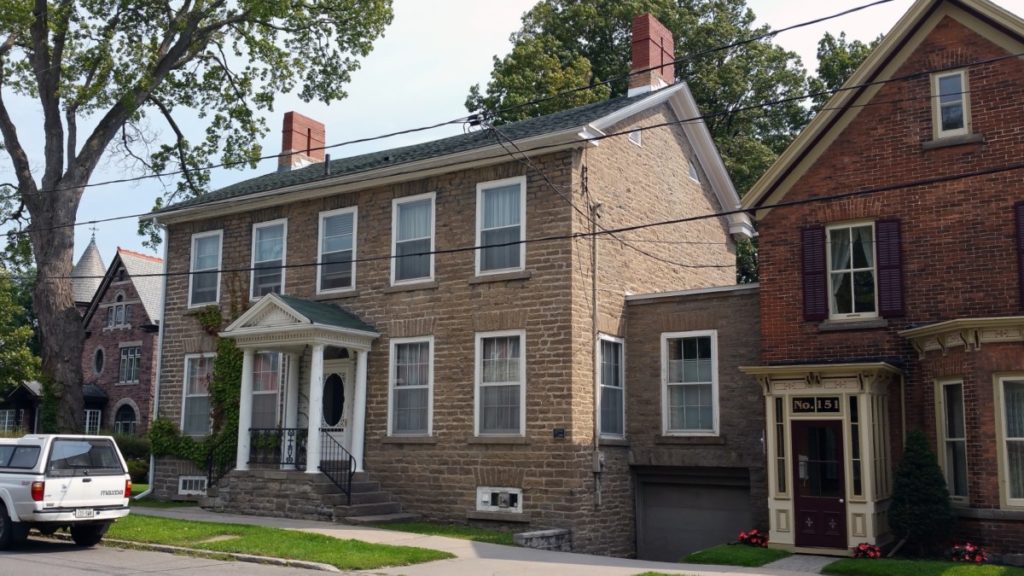


159 King Street East “Last Camp”, Thomas A Reynolds House – c. 1890
A great example of Queen Ann Style, from the rounded tower to the fan motif. By architect George A. Allan of Brockville.
Had I mentioned that most of the odd number houses on King Street have the St Lawrence River in the back. I love watching the large commercial ships seemingly glide on the river almost nonchalantly and yet…
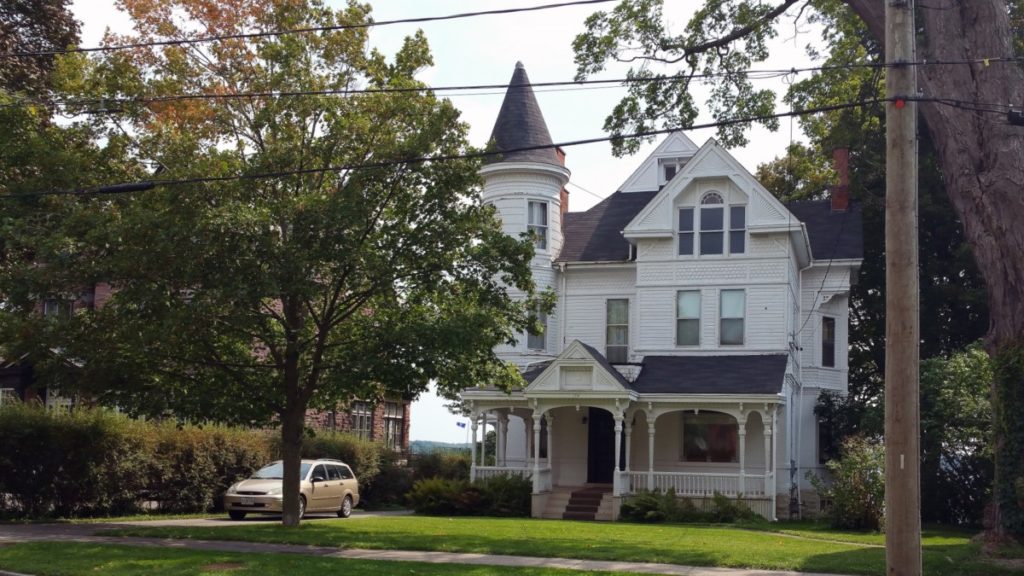
165 King Street East Charles and Kate Cossitt House – c. 1898
This grand house in Romanesque Revival Style is the only house in Brockville built of red granite. Note the oval windows, the rounded tower, and the contrasting detail. Stunning!


What are quoins?

181 King Street East John and Mary Gill House c. 1840-1878
And here a home that 100 years after being built, with the addition of a Mansard roof, transformed itself into a Second Empire Style residence.
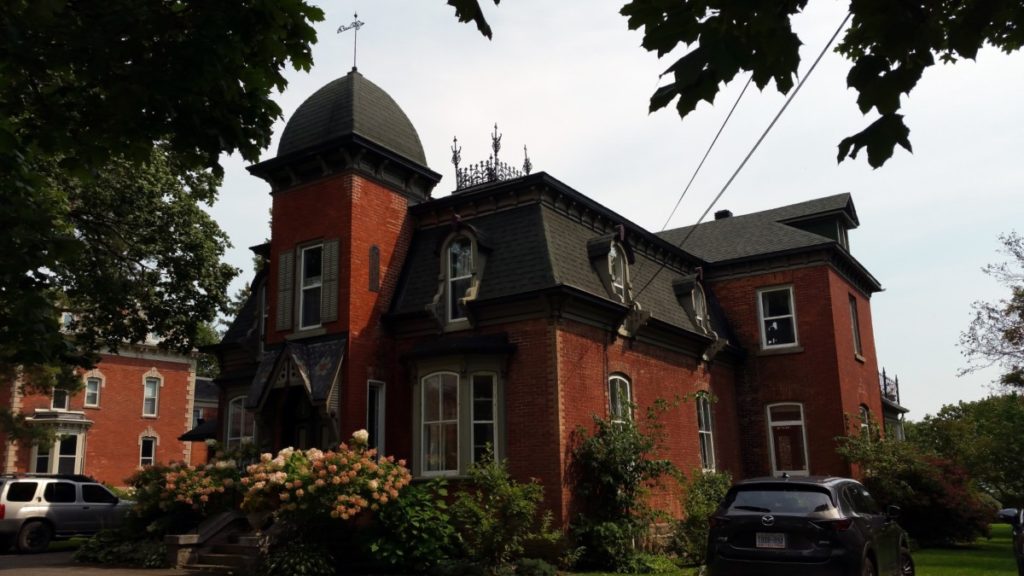
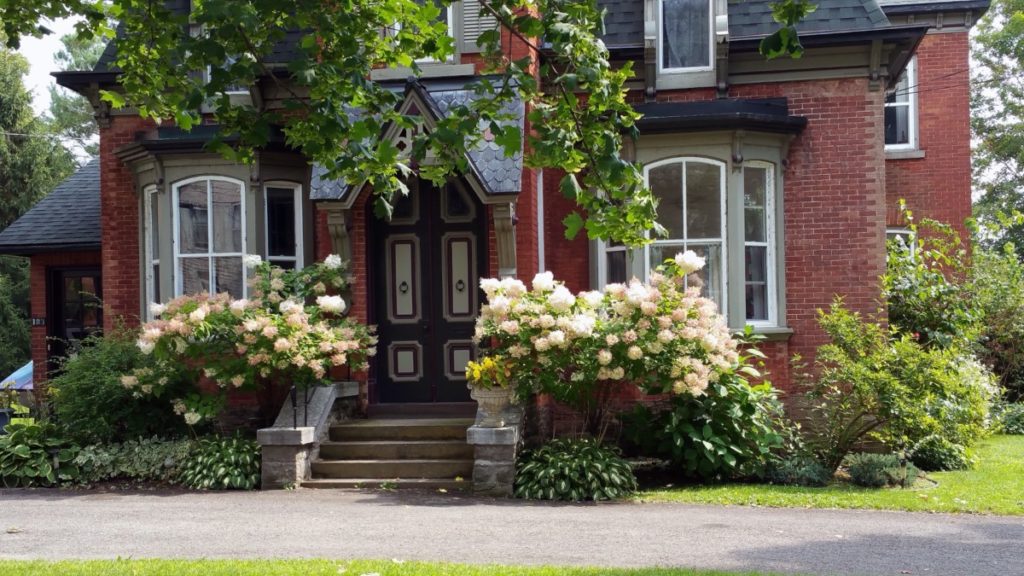
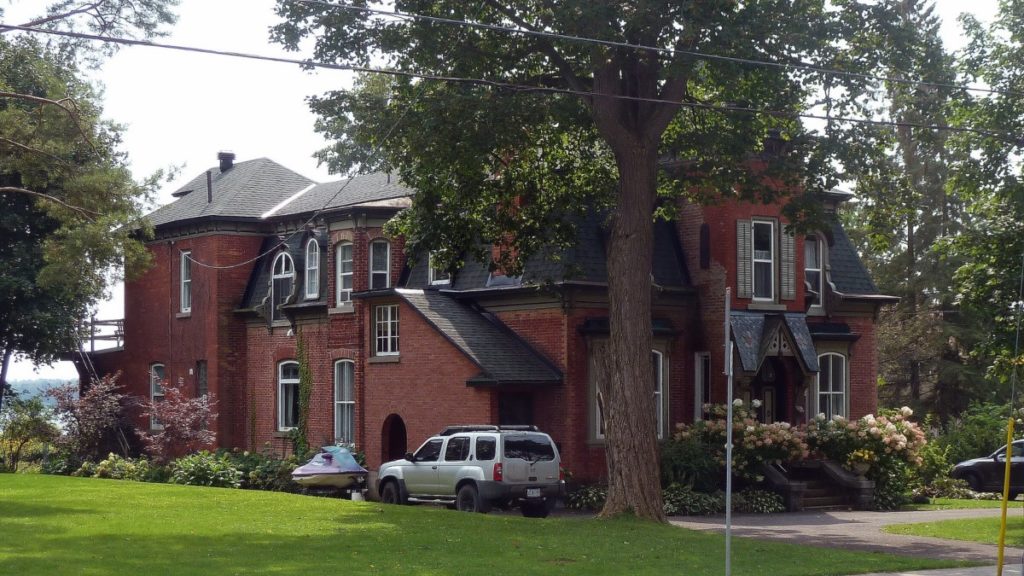
189 King Street East Richard and Mary Field House – c. 1876
So similar to 201 it may have been built by same architect in a more restrained Second Empire style with echoes of Gothic in the arched window pediments. We are definitely in my favourite portion of King Street East!


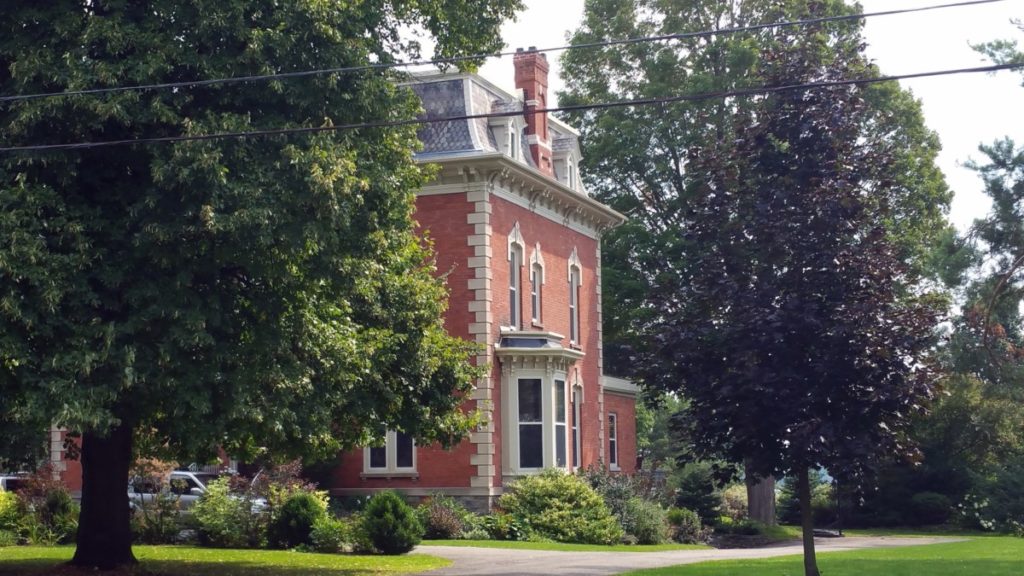
201 King Street East Edwin Clayes House – c. 1871
Great detail here! The mansard slate tile roof. The windows. The enclosed portico. The beautiful brick work with the contrasting quoins and the vines. Finally the winged creatures flanking the entrance are a great touch. They remind me of the gargoyles of Notre Dame or Parliament hill.

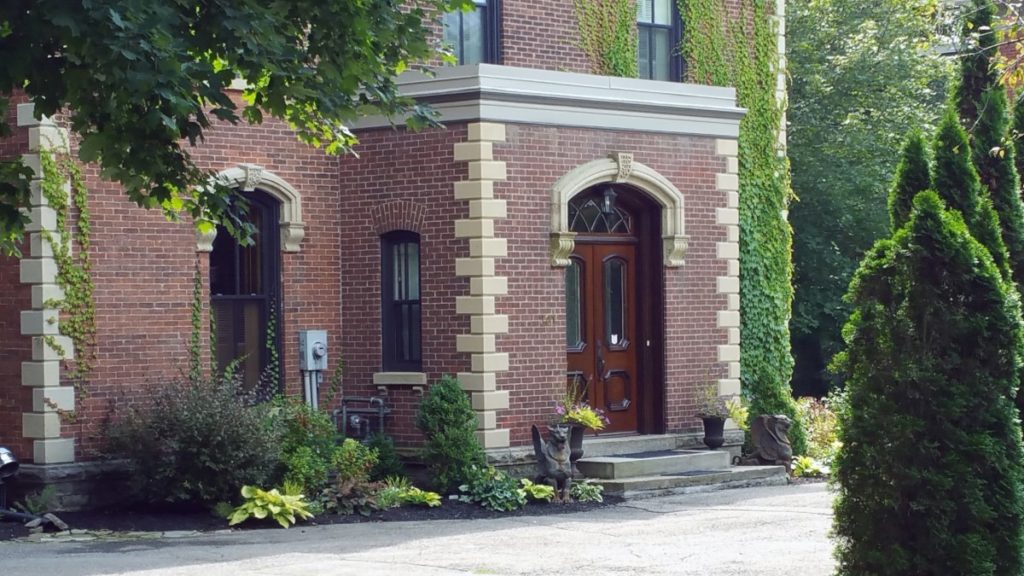
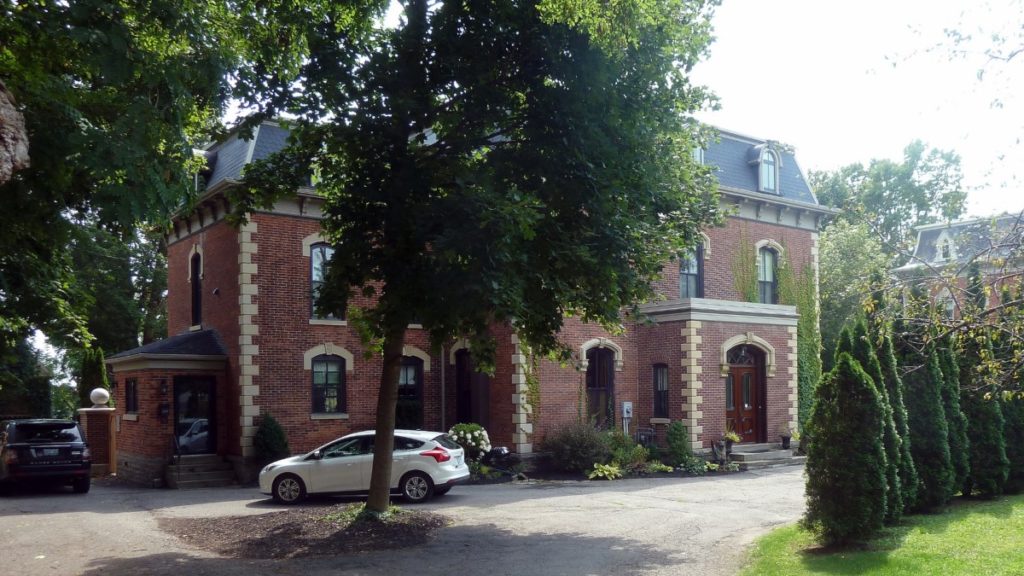
207 King Street East Indian Cliff, the home of Major James Walsh and his wife Mary – c. 1882
This home though lovely in style is best known for having been the home of Major James M. Walsh.

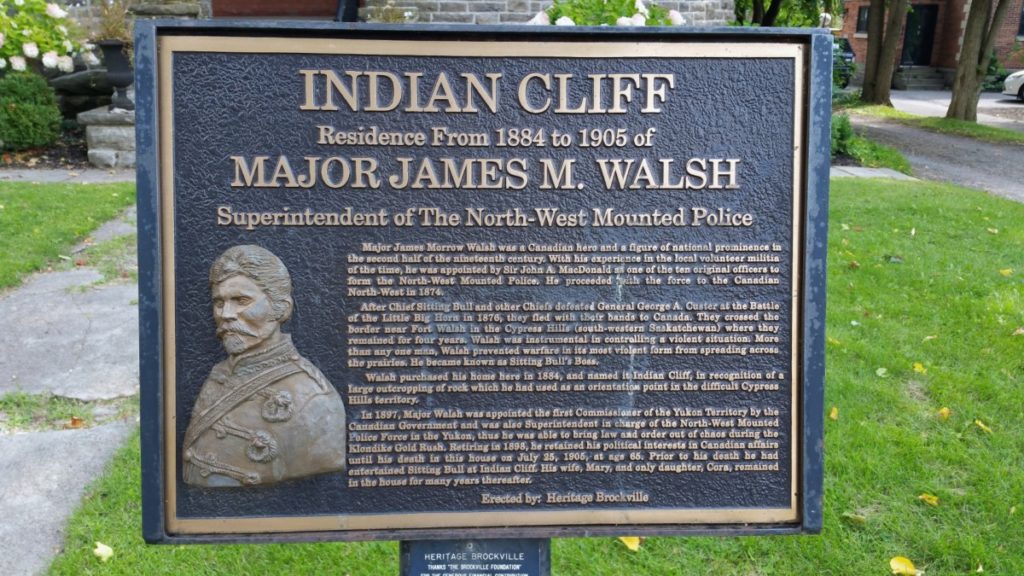
213 King Street East Thomas and Janet Gilmour House – c. 1873
This home is similar to 189 and 201 King Street East, however, that fact can easily go unnoticed because of the painted brick. Marsard roof, ornamented pediments, centre door plan, 3 bays of windows and the cut stone quoins.
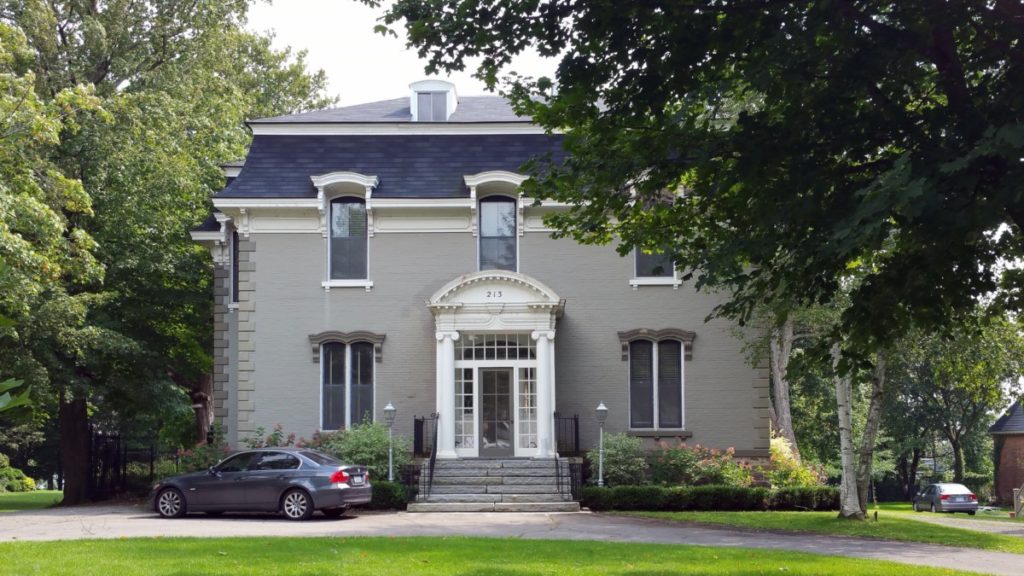
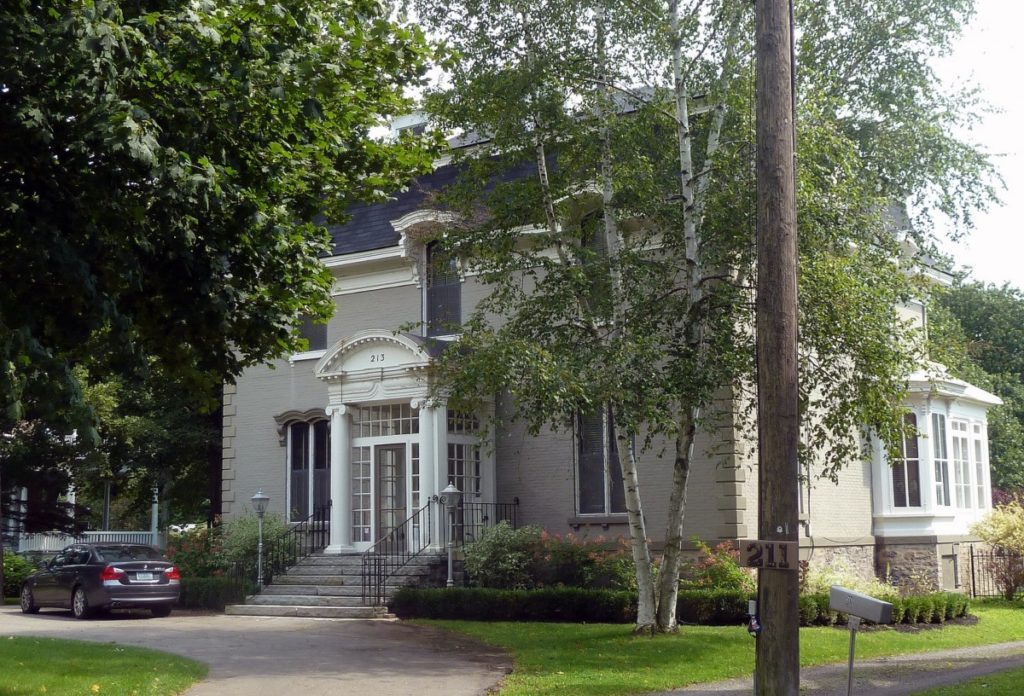
223 King Street East William H. Jackson House – c. 1867
At 223 King Street East we have a classic example of Italianate style with the wide bracketed eaves, the round headed windows, the belvedere and the verandahs.
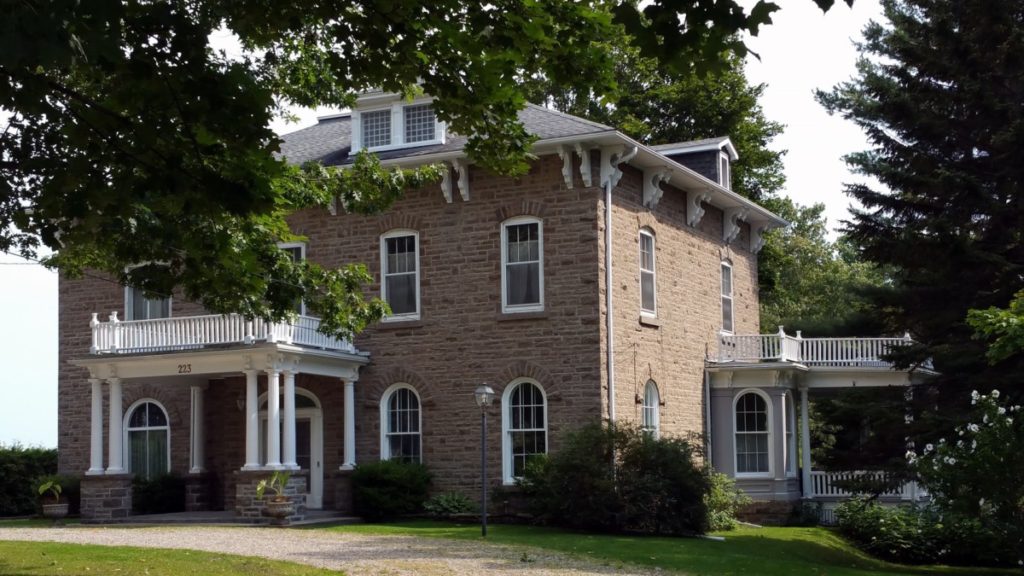


225 King Street East Cedar Cliffs, Richard P. Cooke House – c. 1869
This home is also in Italianate Style and in some ways similar to 223 but has been altered over the years. It has extensive verandahs and a great conservatory.
